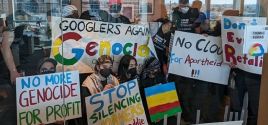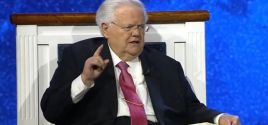Evidence Featured in Oklahoma City Bombing MemorialNewsmaxSep. 02, 2006 |
Popular 
Report: Blinken Sitting On Staff Recommendations to Sanction Israeli Military Units Linked to Killings or Rapes

America Last: House Bill Provides $26B for Israel, $61B for Ukraine and Zero to Secure U.S. Border

'Woke' Google Fires 28 Employees Who Protested Gaza Genocide

Bari Weiss' Free Speech Martyr Uri Berliner Wants FBI and Police to Spy on Pro-Palestine Activists

John Hagee Cheers Israel-Iran Battle as 'Gog and Magog War,' Will Lobby Congress Not to Deescalate
 FBI evidence that helped convict Timothy McVeigh and Terry Nichols went on display Friday at the Oklahoma City bombing memorial, even as a congressman and others continue to raise questions about the 1995 explosion that killed 168 people. The display includes items ranging from mangled pieces of the truck used in the explosion to the automatic Glock handgun taken from McVeigh when he was arrested by a state trooper 90 miles from the bombing site. "Hopefully, the exhibit will answer some of the questions the public has regarding the investigation," said Nancy Coggins, spokeswoman for the Oklahoma City National Memorial and Museum. "The evidence we have on display was never viewed by the public because of the nature of the closed trials." Charlie Hangar, the trooper who stopped McVeigh because his 1977 Mercury Marquis did not have a license plate, was scheduled to attend the exhibit's opening. Kari Watkins, executive director of the museum, said conspiracy theories will always be linked to the bombing. "This exhibit is not going to make those theories go away, nor will anything else," Watkins said. "What it does show is methodical police work at all levels and how they worked together without boundaries to solve this crime." Rep. Dana Rohrabacher, R-Calif., still plans to conduct hearings to explore "possible foreign connections" to the Oklahoma City bombing, said his chief of staff Rick Dykema. The congressman is chairman of the Oversight Investigations Subcommittee of the International Relations Committee. Hundreds of FBI agents worked in the multistate investigation to link McVeigh and Nichols to the crime. The display contains several photographs of evidence taken by FBI photographer Jeanetta Clark and others in several states, including Kansas, where the truck was rented. It also contains an interactive display where visitors can sift through debris from the bomb site and an exhibit on how victims were identified. The Alfred P. Murrah Federal Building was destroyed when a rented cargo truck packed with 4,800 pounds of ammonium nitrate and fuel oil was detonated. Besides the 168 killed, more than 800 were injured. The dead included eight law enforcement officers and 29 visitors to courthouse, as well as employees of several federal agencies. McVeigh was executed in 2001 after he was convicted of federal murder charges. Nichols, who met McVeigh in the Army, was convicted on federal and state bombing charges and is serving multiple life prison sentences. Michael Fortier, another Army buddy, pleaded guilty to not telling authorities in advance about the bomb plot and was released in January after serving more than 10 years in prison. Fortier testified against McVeigh and Nichols. Prosecutors said the bombing was in retribution to the deaths of about 80 people in the government siege at the Branch Davidian compound in Waco, Texas, exactly two years earlier on April 19. |



